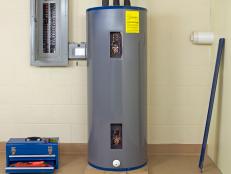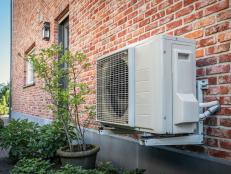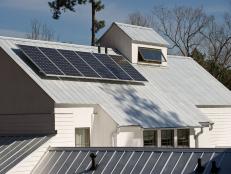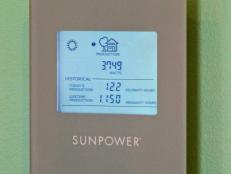Advanced Plumbing Systems: Getting the Most From Plumbing
Using advanced plumbing technology can save the average family of four more than 30,000 gallons of water annually.
According to the EPA, the average family of four uses 400 gallons of water a day. The same family, if they employed simple water-saving practices and lived in a home where the plumbing systems were optimized, could conserve more than 30,000 gallons per year — enough to provide drinking water for 150 thirsty people.
Plumbing systems don't just affect water use. They also influence energy use and occupant comfort within a home. Hot-water energy use accounts for about 15 percent of total residential energy use. And we all know that blasts of hot or cold water in the shower can be pretty annoying at 6:00 A.M.
The solution to these issues lies in optimizing all plumbing systems and creating advanced plumbing systems wherever possible.
Plumbing systems can be optimized to provide minimal water and water-heating use with maximum performance. Optimizing your plumbing system involves creating a deliberate design strategy and coordinating plumbing layout with other mechanical systems and the framing of the home. Ironically, most problems with plumbing systems arise in these processes — not in the selection and installation of materials and products.
Product and system selection is also critical to plumbing system performance, however, and many systems and products (old and new) make it easy to optimize your system and add advanced features to the system that can improve comfort, as well as water and energy efficiency. It also can help make the home more adaptable in the future.
Advanced plumbing systems are basically optimized systems that add more innovative systems and technologies to provide unique features and functionality not found in a traditional system.
Many options are available for designing and building an optimized and advanced plumbing system, but the basic concepts, used are the same:
- Centralize the plumbing stack to effectively minimize pipe runs for efficiency and allow for ease of access for repair or remodeling efforts — and with no significant increase in cost. Not incidentally, this practice qualifies for credit if you're building a LEED-certified home. Example layouts of centralized plumbing systems can be found in the PATH Design Guide: Residential PEX Water Supply Plumbing Systems.
- Use a home-run or manifold plumbing supply system to provide control centers. These systems can reduce material use, conserve water, and improve durability and remodeling flexibility. Many plumbers find them simpler to install than standard systems. Combined with modular quick-connect fittings and fixtures, home-run plumbing systems provide efficiency and adaptability unheard of in traditionally piped systems. The cost of installing a home-run water supply system should be similar to that of a rigid pipe system, but it may involve more time for training and supervising trade contractors during installation, if they're unfamiliar with the system.
- Use a tankless hot-water heater. "Standby losses" (heat lost while your hot water sits in the tank) can account for 20 to 60 percent of your annual water-heating costs. Using a tankless hot water heater can eliminate these losses. The cost of a tankless water heater is comparable to a very high efficiency tank model water heater, but installation can cost between two and four times more on a tankless water heater. This increase in cost is due to different requirements for pipe size, as well as additional electrical requirements.
- If a tankless heater seems impractical for your project, consider solar-assisted hot water heating, or other hot water heating approaches.
- Use water-efficient products. New "dual flush" low-flow toilets eliminate the need to flush twice, a primary reason the first low-flow toilets met with consumer distaste.
- Recover graywater, which is wastewater from bathtubs, shower drains, sinks, washing machines and dishwashers. It accounts for 60 percent of a home's water output. It's safe to recycle graywater for use in irrigation, toilets and exterior washing. Graywater-recovery systems are relatively simple to install in new-construction scenarios but difficult to retrofit into a home. Upfront cost to direct gray water into a separate location for treatment than black water (toilet water) is nominal. However, the cost of ongoing treatment and testing of the graywater system and the learning curve experienced by code officials may be significant.
- Use air-admittance valves. AAVs are one-way mechanical vents used to eliminate the need for venting pipes through traditional roof penetrations. The AAVs are pressure-activated, so the flow of wastewater causes the AAV to open, allowing air to enter for proper drainage. Using AAVs reduces material use, allows for more flexibility in fixture layout, and cuts the number of roof penetrations, which reduces maintenance issues. The cost of an AAV is $25-$40, but AAVs decrease the need for vent piping and can reduce labor.
Stacy Hunt is a Pittsburgh-based consultant on green building and building science. She is the former business manager of BuildIQ.











































